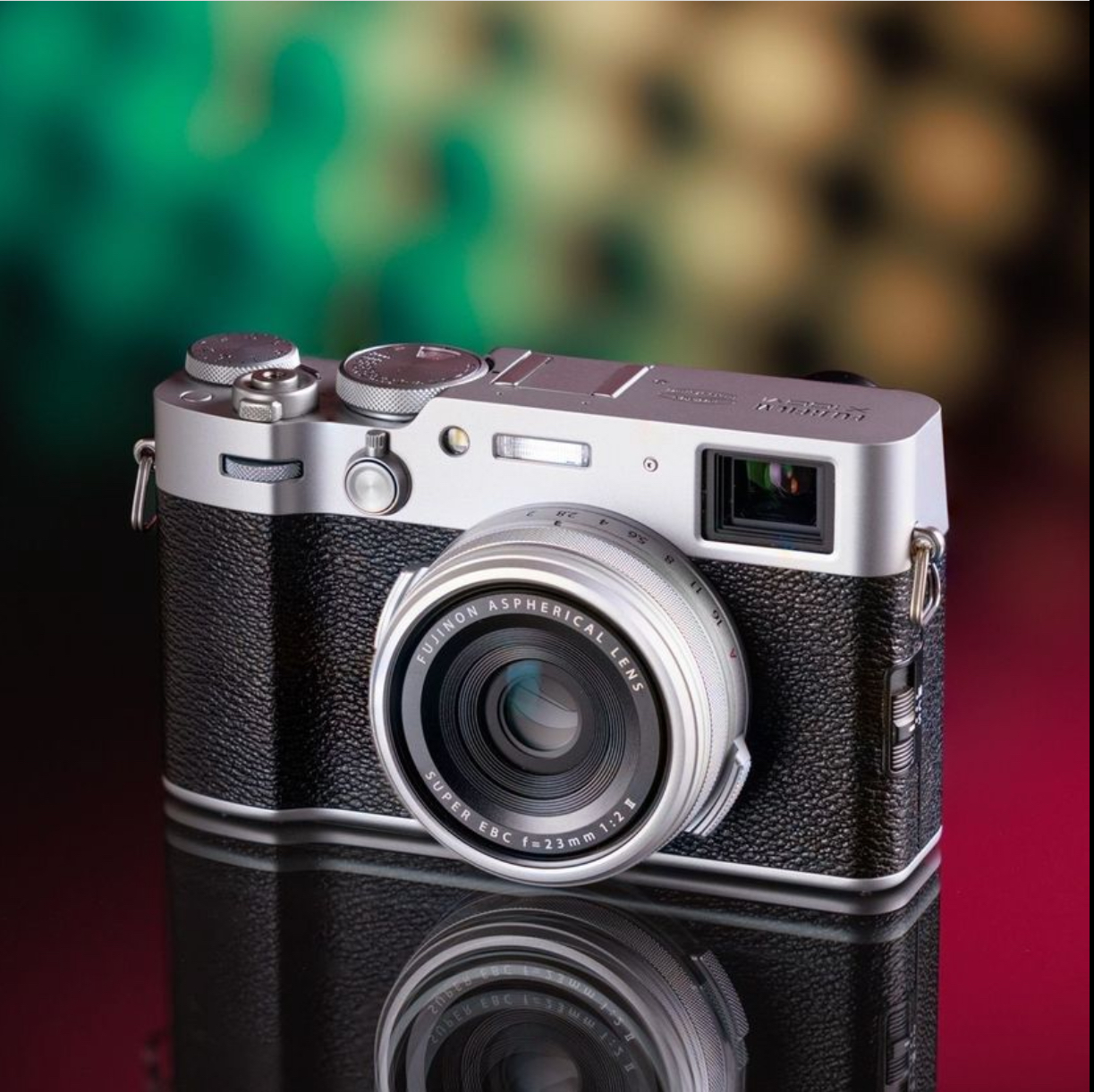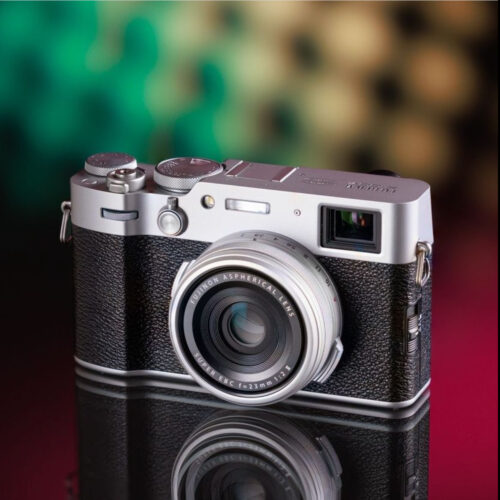- I’ve been shooting Canon cameras for over 20 years. I’m ready for something different. To be clear, I’m not at all dissatisfied with my Canon gear – my R5 in particular is without a doubt the best camera I’ve ever owned. But each camera system has their own unique look to their images and feel when shooting them. And after a few years of hearing every hipster on YouTube and Instagram extol the virtues of the X100V, I’m ready to give this system a try. There’s always the possibility I’ll hate it and send back.
- There are times when I don’t want to carry a camera body and 3 or 4 lenses in a backpack. I’m going to be 54 next month. I have a bad back. Quite honestly I know there’s going to come a time when I’m just not physically going to be capable of trekking around from sunup to sundown with a backpack full of gear strapped to my back. Which has had me thinking a lot more about a camera like the X100VI or Leica Q3. Speaking of Leica…
- I’m interested in the Leica Q series. So the X100VI is sort of a half step in that direction. Fanboys of each of these two platform will burn me in effigy for even suggesting their beloved camera is in any way comparable to the other. But the truth is there are some reasonable similarities – both are fixed lens, rangefinder style cameras. But the X100VI is about $1600.00 while the Q3 is about $6000.00. Have shot interchangeable lens bodies for over 20 years, I think it makes sense to spend $1600.00 before I spend $6000.00 to see if I like the experience.
- I want to see what all the pandemic hipster hype is about. As I previously mentioned, there’s a lot of hype around this camera. The previous generation caught a huge tail wind during the pandemic and Fuji couldn’t produce enough of them. So secondary market pricing became silly. While I placed a pre-order for this camera with Adorama, I’m actually not certain if I’ll have one when their released next week. Fuji is producing the X100VI at their new manufacturing facility in China which suggests they’ll have more output capability. Fingers crossed.
WHAT ARE THE UNIQUE FEATURES OF THE FUJI X100VI?
My number one goal for purchasing the X100VI was to get a different shooting experience so let’s talk a moment about features unique to this camera vs others like my Canon cameras.
- Leaf shutter – without getting too technical a leaf shutter is a more expensive shutter design than a traditional, rolling or curtain type shutter in the main advantage is how it works with flash photography. The more common rolling shutter is generally going to be faster than what a leaf shutter is capable of – not by a tremendous amount, maybe a stop or two.
- Film simulations – Fuji is about the only camera manufacturer that also still manufactures film so they have a deeper insight as to the color science and look of film photography. Their film simulations attempt to change the look of an image to literal simulate the look of famous types of photographic film. For years I just assumed Fuji Film Simulations were essentially filters, but apparently that’s not the case. Where a filter is essential a coat of paint over any existing file, Fuji Film Simulations make changes to an images properties at a more fundamental level.
- Built in Neutral Density Filters. I’ve only started using ND filters in the past couple of years, but having them in-camera vs having to dig one out of your camera bag, take it out it’s container, screw it on the camera lens, only to have to repeat the process when you’re finished with it makes using filters painful. Having a camera with them built in is not only game changing from a time and efficiency standpoint, it also means I can travel lighter with this camera.
- Viewfinder – EVFs are a relatively new convention in photography. They have only only been around for the last 10 or 12 years or so. The electronic viewfinder is a godsend to photography because when you make changes to exposure, ISO or other settings, you can actually see in that electronically generated or digital image generated by the electronic viewfinder what your photo will look like. Prior to that every viewfinder on a camera was an optical viewfinder. On a rangefinder camera, you’re looking through a little glass window and you’re not even actually seeing the picture perspective of what the picture will look like through the lens. A DSLR or digital single lens reflex, your viewfinder actually gives you the perspective of looking directly through the camera lens as opposed to the offset little window on rangefinder.. But the rub here is that when you change settings like exposure compensation on your camera, you’re not seeing the effect, those changes will have on the final picture when you’re looking through an optical viewfinder. The X100 series (this isn’t new in the VI) has a hybrid viewfinder. If you want to go old-school and have the experience of shooting with a purely OVF, you can. You can also switch to the EVF and have all the benefits this viewfinder technology brings. Or you can have a hybrid of the two, with a small screen in the corner of the view finder that displays critical settings.
I’m actually pretty excited about getting this camera, but I do have some concerns as well. If I like it, will I start wearing a skull cap? Grow my hair longer? Get ink? Forgive my attempt at humor – here’s my real list of concerns:
- Fixed Lens – will I be able to get by on a single focal length? Quite honestly, this has been one of the issues which has kept me from moving to Leica. The Q3 is a great option, but It has a wide (28mm), fixed lens. Want interchangeable lenses? Go with the M series. But you can kiss auto focus goodbye. Want both auto focus and interchangeable lenses? Then go with the SL series…which doesn’t seem very Leica like in my opinion. At that point, I might as well stick with my Canon gear. The Fujifilm X100VI also has a fixed lens – 23mm f2.0. Not quite as fast as the Leica Q3 28mm f1.7 lens. On the X100VI’s crop sensor (more on that later) that 23mm lens is a 35mm equivalent. If I have to be stuck a one focal length, 35mm suits me. I also never currently shoot at 28mm. Both the Q2/Q3 and the X100V have large enough sensors that they can digitally zoom/crop to “fake” different focal lengths. But the Fujifilm X100VI does have some accessory lens attachments to produce an optical “zoom.” Take that Leica… The TCL-X100II will zoom in to provide change the 35mm equivalent lens to a 50mm equivalent, while the WCL-X100II provides a wider 28mm equivalent. Sure, that means you’ll have to carry around an extra lens or two if you want the added focal ranges, but it would still be a VERY small, light kit.
- Will my expensive Canon gear gather dust? I have at least 20k sunk into my Canon bodies and lenses. What if I get so enamoured of the shooting experience with this Fuji X100VI that my other, more expensive equipment just sits and depreciates? Hopefully I’ll find a nice balance of when I like to use each system.
- What if I don’t end up using it much? The opposite problem is also possible. After the “honeymoon period” it may just sit in the camera gear drawer. Particularly if I feel “guilty” about grabbing my “cheap” camera and not taking the time and effort to use my more expensive gear. Again, finding a balance will be key.
Hopefully many of my questions will be answered next week on the 29th when the Fuji X100VI is supposed to make it into my hot little hands.



0 Comments